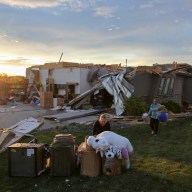Saint Mary’s University recently held its third annual BioBlitz at Crystal Crescent Beach. It’s a field method that assesses the biodiversity in a given area.
“Biodiversity is a big thing on the radar right now because we’re losing biodiversity at an absolutely staggering rate,” says Janet Stalker, the communications and outreach officer for SMU BioBlitz 2010.
Participants in the event included a total of about 70 students, scientists and volunteers. The group found 622 different species in the 650-acre park, including 56 species of birds, 196 species of insects and 31 species of algae. One of the species, Japanese Knotweed, is a type of invasive plant species not native to Nova Scotia.
Part of the objective of SMU’s BioBlitz is to build a biodiversity database of the findings at several different locations to monitor how biodiversity changes.
Why biodiversity loss?
By the end of the century, climate change will likely be the biggest factor behind biodiversity loss, says the Convention on Biological Diversity (CBD). The CBD is an international legally-binding treaty in effect since 1993.
“It (climate change) is already forcing biodiversity to adapt either through changing habitat, life cycles, or development of new physical traits,” says the CBDs fact sheet on climate change.
“This, in turn, will affect vital ecosystem services for all humans, such as air and water purification, pollination and production of food, decomposition and nutrient cycling, carbon sequestration, etc.
“Biodiversity can also help reduce the effects of climate change. The conservation of habitats, for example, can reduce the amount of carbon dioxide released into the atmosphere. Moreover, conserving mangroves can reduce the disastrous impacts of climate change such as flooding and storm surges.”
















